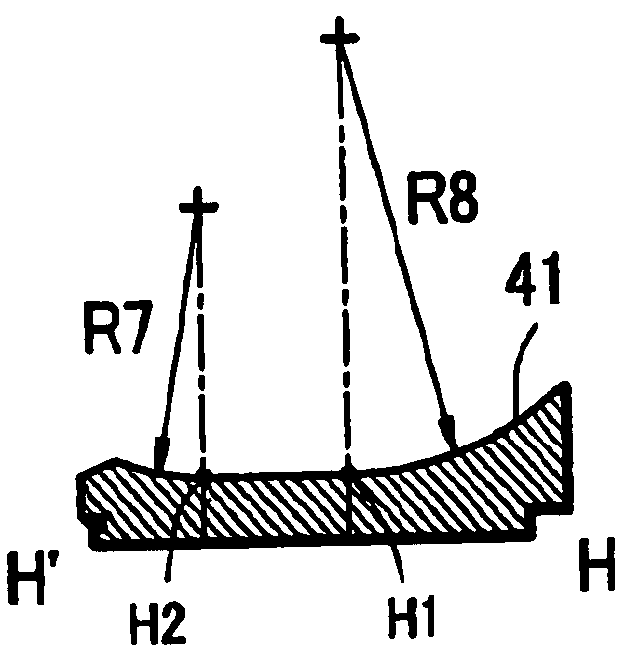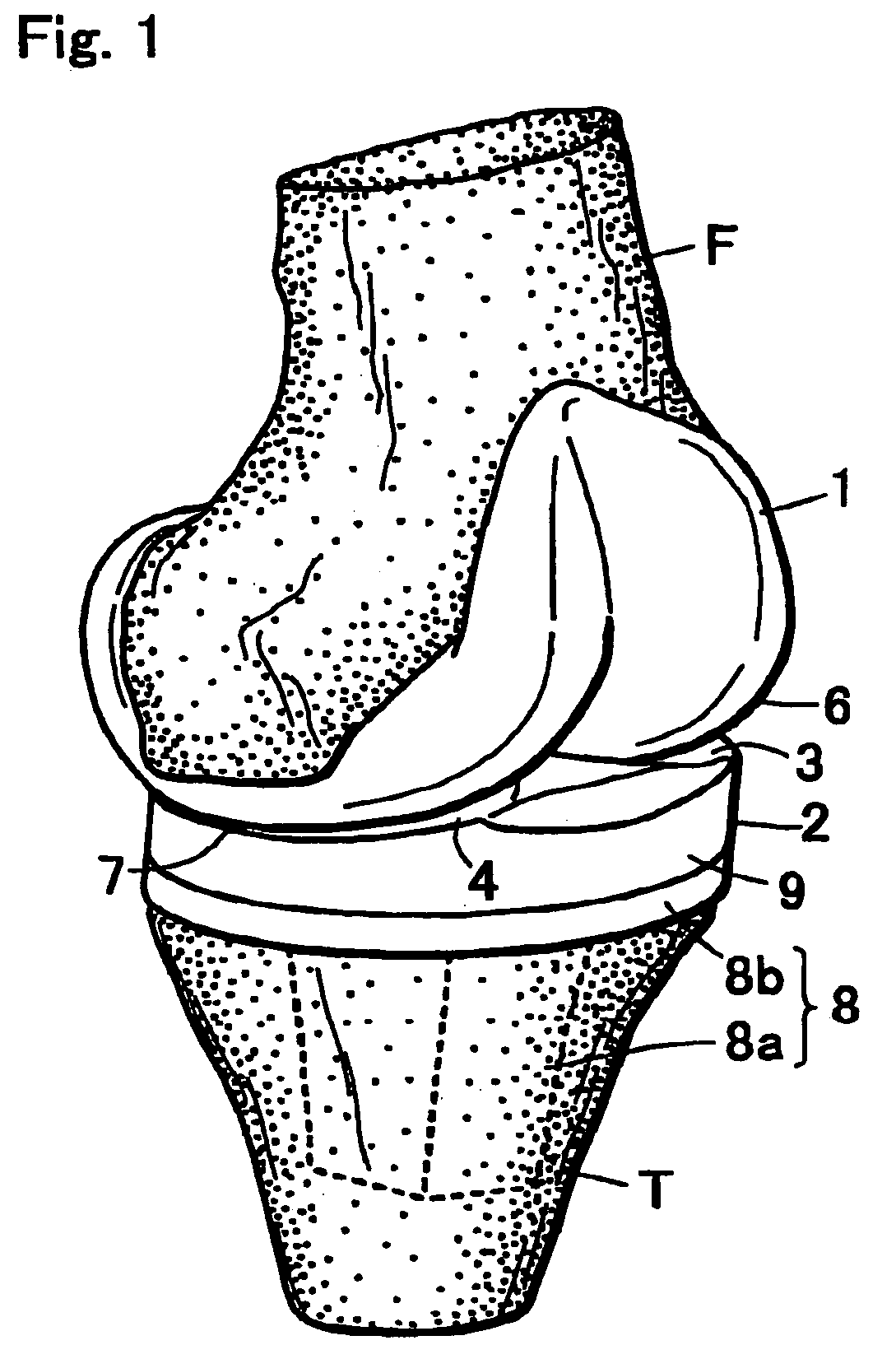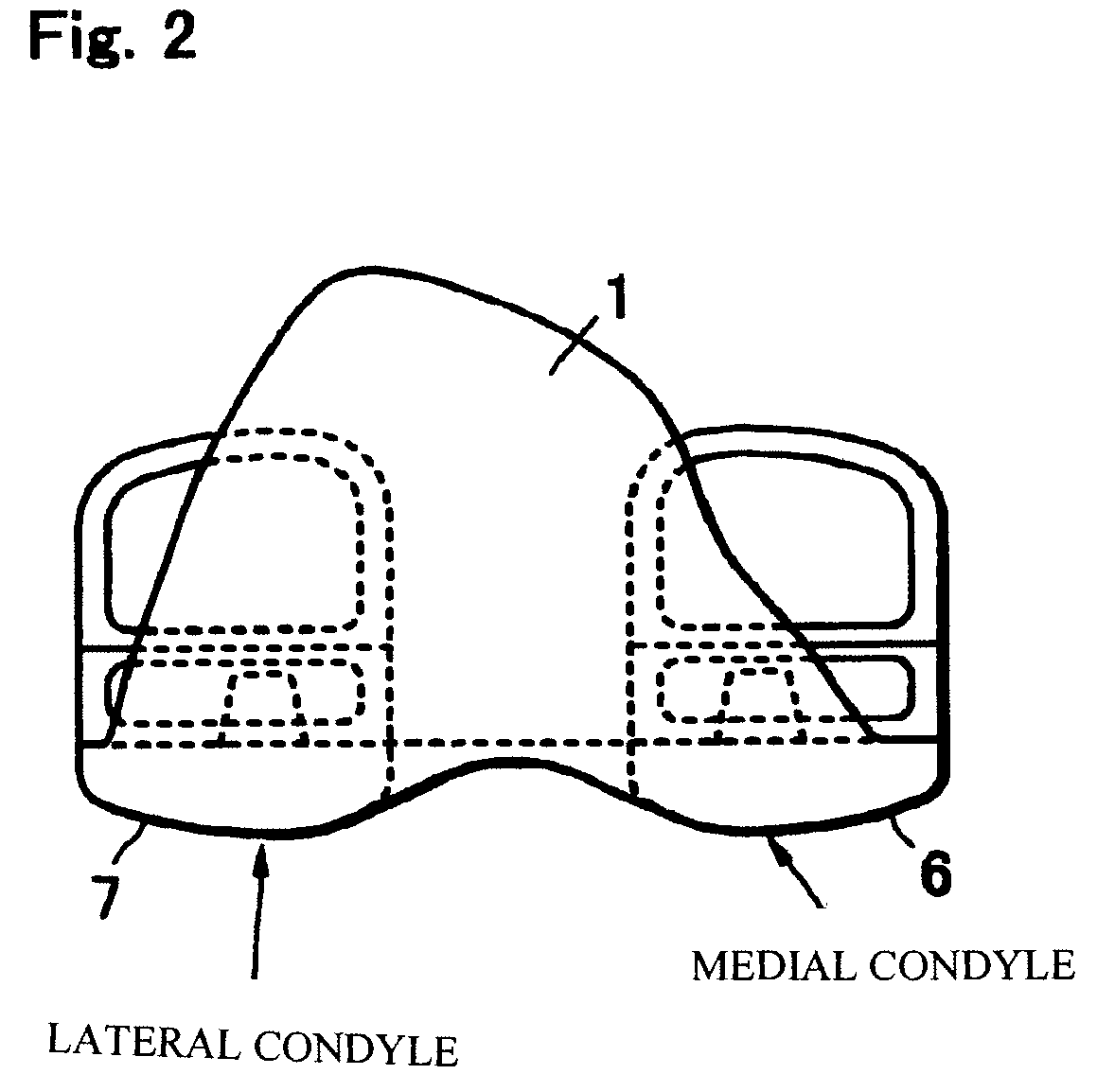Artificial knee joint
- Summary
- Abstract
- Description
- Claims
- Application Information
AI Technical Summary
Benefits of technology
Problems solved by technology
Method used
Image
Examples
Embodiment Construction
[0027]FIG. 1 shows the condition that the artificial knee joint according to the present invention is set at the knee joint region. The artificial knee joint is composed of a femoral component 1 to be secured to a distal portion of a femur F, and a tibia component 2 to be secured to a proximal portion of a tibia T. Among them, the tibia component 2 is composed of a tray member 8 in which a stem 8a to be embedded in the tibia and a tray 8b are integrally formed, and a sliding member 9 in which the femur component is sliding.
[0028]FIG. 2 is a front view of the femur component 1. In this femur component 1, an outer condyle sliding surface 7 and a inner condyle sliding surface G are formed at an outer condyle and an inner condyle, respectively, and they compose a joint surface by sliding an outer sliding surface 4 and an inner sliding surface 3 of the tibia component 2 to be described later.
[0029]In this case, a front-to-back (longitudinal) direction, an inner direction, and an outer di...
PUM
 Login to View More
Login to View More Abstract
Description
Claims
Application Information
 Login to View More
Login to View More - R&D
- Intellectual Property
- Life Sciences
- Materials
- Tech Scout
- Unparalleled Data Quality
- Higher Quality Content
- 60% Fewer Hallucinations
Browse by: Latest US Patents, China's latest patents, Technical Efficacy Thesaurus, Application Domain, Technology Topic, Popular Technical Reports.
© 2025 PatSnap. All rights reserved.Legal|Privacy policy|Modern Slavery Act Transparency Statement|Sitemap|About US| Contact US: help@patsnap.com



